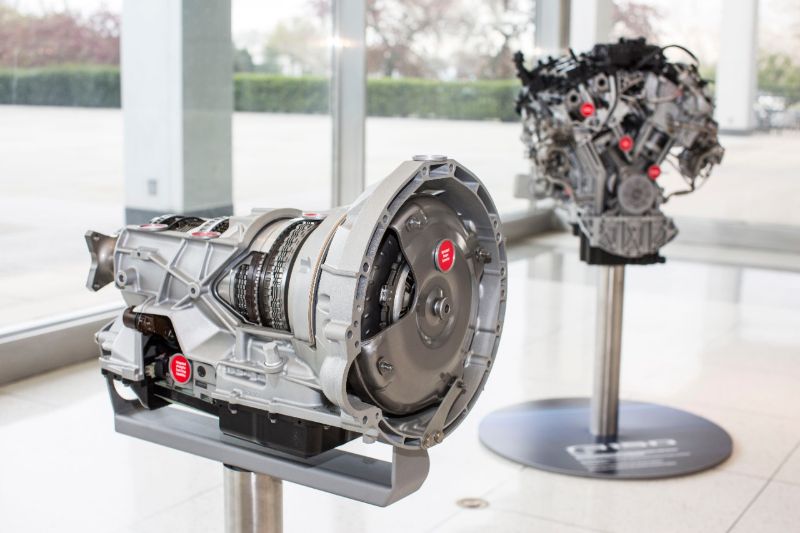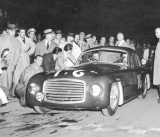
The F-150 EcoBoost made it clear that a turbocharged 6-cylinder engine can deliver just as much power as an 8-cylinder powertrain. It is available in two versions: a 2.7-liter and a 3.5-liter.
The Specs

3.5-liter EcoBoost engine and 10-speed transmission
The 2.7-liter F-150 EcoBoost delivers 325 horsepower along with 375 pound-feet of torque. In terms of fuel economy, it delivers 18 mpg in the city, 23 on the highway, and 20 combined. It has a payload rating of 2,250 pounds and a towing capacity of 8,500 pounds. This engine block is cast using the same material that you find on the 6.7-liter Power Stroke Diesel engine.
In most 3.5-liter EcoBoost F-150s, the output increases to 365 horsepower and 420 pound-feet of torque. However, the Raptor gets 450 horsepower and 510 pound-feet. The fuel economy is 17 city/23 highway/20 combined mpg. This EcoBoost engine gives the F-150 a payload rating of 3,180 pounds and a towing capacity of 12,200 pounds. It maintains 90 percent of peak torque between 1,700 and 5,00 rpm.
Both F-150 EcoBoosts also feature dual overhead camshafts and direct fuel injection.
Comparing the F-150 EcoBoost V6 to the V8
One of the biggest advantages of the EcoBoost F-150 is its ability to deliver a similar output to the familiar V8 engine found in F-150 models but with better efficiency. This comes from the combination of direct fuel injection and a twin-scroll turbocharger.
Boosting EcoBoost Acceleration
The EcoBoost F-150 models are already powerful and fun with a good acceleration. Even so, you can make some adjustments via mods that will enhance the overall performance.
For example, you can upgrade the cold air intake on the EcoBoost and combine it with a custom tune to increase the airflow. This lets the turbocharger in the engine work harder, so it produces more power while also boosting fuel economy and throttle response. You can also swap the throttle body to boost throttle response and power.
Another option is to swap the EcoBoost’s downpipe with an aftermarket one that is less restrictive to improve the turbocharger efficiency, boosting engine output. There is also the option of replacing the turbocharger with a larger version or changing the rear gears.
How Various Components Work
One of the key components of the F-150 EcoBoost is the twin-scroll turbocharger, which has two input lines leading from the exhaust manifold to the turbine. These lines suck in exhaust gases and prevent turbo-lag issues common to single-scroll turbos. Twin-scroll turbochargers can spool up more quickly with a quick, crisp throttle response. If you swap out the stock turbocharger with an aftermarket version, this can increase power but may reduce engine longevity and fuel economy.
Like other turbocharged applications, the F-150 EcoBoost requires an intercooler to maximize the use of the turbocharger. The intercooler cools down the hot air that the turbocharger produces, cooling it down and then feeding it into the engine. If you upgrade the turbocharger on your EcoBoost with an aftermarket part, you will have to do the same with the intercooler.
Direct injection in the F-150 EcoBoost engine puts the fuel right into the combustion chamber or cylinder. This is in contrast to with engines that do not have direct injection, where the fuel goes above the valves and above the chamber. By directly injecting fuel, the fuel burn becomes more efficient, boosting power.





